
A painter and traveller, Georges Ricard-Cordingley (1873-1939) constantly searched for an original contact with the world of sea.

A painter and traveller, Georges Ricard-Cordingley (1873-1939) constantly searched for an original contact with the world of sea.
First voyage to the North Sea with the Fishermen's Mission. First studies for seascapes.
Works exhibited in Paris and London.
Divides time between London, Paris, and Boulogne. Paints portraits and seascapes.
Éliane (1913-1945), Louis (1917-1942) and Gabrielle (born 1924).
Divides time between the Parisian suburb, Cannes and Boulogne. Takes many trips Normandy, Brittany, the Mediterranean, North Africa. Exhibits work in and around Paris, Cannes, and Boulogne. Also travels to lake regions in Switzerland, Italy and France.
Winters in Cannes, summers in Boulogne-sur-Mer.
Georges Ricard-Cordingley is the only maritime artist to have begun life in Lyon. His taste for the esoteric, his writings about art, and his treatment of mist in seascapes—nuanced tones, subtle harmonies—make him a clear product of the Lyonnais school of painting. Here was a man remarkable for his discretion, finesse, and restraint in conveying feelings and emotions. Ricard-Cordingley was said to be a painter of colourful greys: hues echoed not only in the styles of the Lyonnais and London schools, but in the two cities themselves, which granted the artist his first taste of success. He would also find a niche in Boulogne-sur-Mer and Cannes. In Cordingley’s mind, the morning fog on the North Sea was linked to the evening fog on the Côte d’Azur, and his work basks in the uncertain, infinite nature that this artistic “bilingualism” so effortlessly translates into universal emotion. Different—but above all, diverse—Cordingley’s oils, watercolours and charcoals are marked by a unique artistic vision that unites them all.
From Pierre Miquel (1921-2002) art historian, Cordingley expert
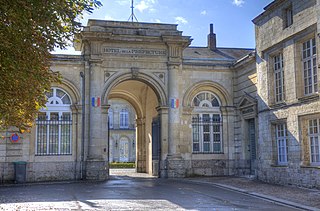
Pas-de-Calais is a department in northern France named after the French designation of the Strait of Dover, which it borders. It has the most communes of all the departments of France, 890, and is the 8th most populous. The Calais Passage connects to the Port of Calais on the English Channel. Pas-de-Calais borders the departments of Nord and Somme and is connected to the English county of Kent via the Channel Tunnel.
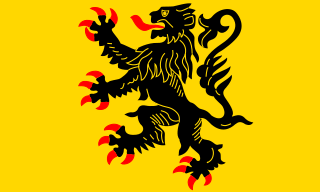
Nord-Pas-de-Calais ; Picard: Nord-Pas-Calés); is a former administrative region of France. Since 1 January 2016, it has been part of the new region Hauts-de-France. It consisted of the departments of Nord and Pas-de-Calais. Nord-Pas-de-Calais borders the English Channel (west), the North Sea (northwest), Belgium and Picardy (south). The majority of the region was once part of the historical (Southern) Netherlands, but gradually became part of France between 1477 and 1678, particularly during the reign of king Louis XIV. The historical French provinces that preceded Nord-Pas-de-Calais are Artois, French Flanders, French Hainaut and (partially) Picardy. These provincial designations are still frequently used by the inhabitants.

Boulogne-sur-Mer, often called just Boulogne, is a coastal city in Northern France. It is a sub-prefecture of the department of Pas-de-Calais. Boulogne lies on the Côte d'Opale, a touristic stretch of French coast on the English Channel between Calais and Normandy, and the most visited location in the region after the Lille conurbation. Boulogne is its department's second-largest city after Calais, and the 183rd-largest in France. It is also the country's largest fishing port, specialising in herring.

Montreuil, also known as Montreuil-sur-Mer, is a sub-prefecture in the Pas-de-Calais department, northern France. It is located on the Canche river, not far from Étaples. The sea, however, is now some distance away.

Berck, sometimes referred to as Berck-sur-Mer, is a commune in the northern French department of Pas-de-Calais. It lies within the Marquenterre regional park, an ornithological nature reserve.
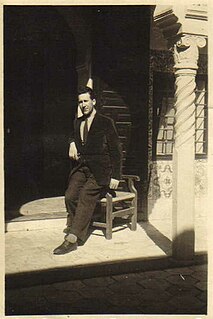
Maurice Boitel was a French painter.

The A16 autoroute – also known as L'Européenne and forming between Abbeville and Dunkirk a part of the larger Autoroute des estuaires – is a motorway in northern France.

The Authie is a river in northern France whose 108-kilometre (67 mi) course crosses the departement of the Pas-de-Calais and the Somme. Its source is near the village of Coigneux. It flows through the towns of Doullens, Auxi-le-Château, Nempont-Saint-Firmin and Nampont, finally flowing out into the Channel near Berck.

The Château de Boulogne-sur-Mer is a castle in the French seaport of Boulogne-sur-Mer, in the Pas-de-Calais département. It houses the Boulogne museum.

The Boulonnais is a coastal area of northern France, around Calais and Boulogne-sur-Mer. It has a curved belt of chalk downs which run into the sea at both ends, and geologically is the east end of the Weald-Artois Anticline.
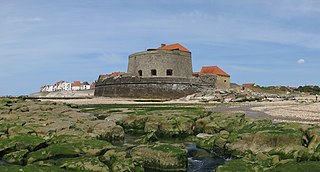
Ambleteuse is a commune in the Pas-de-Calais department in northern France.
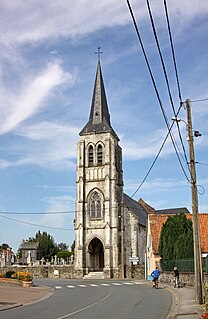
Neufchâtel-Hardelot is a commune in the Pas-de-Calais department in the Hauts-de-France region of France.

Preures is a commune in the Pas-de-Calais department in the Hauts-de-France region of France.
Alphonse Louis Pinart was a French scholar, linguist, ethnologist and collector, specialist on the American continent. He studied the civilizations of the New World in the manner of the pioneers of the time, mixing the empirical observation of anthropological, ethnological and linguistic elements.

Frédéric Cuvillier is a French politician who, until his appointment as Junior Minister for Transport and the Maritime Economy at the Ministry of Ecology, Sustainable Development, and Energy by President François Hollande on 16 May 2012, was a member of the National Assembly of France, where he represented the 5th constituency of Pas-de-Calais on behalf of the Parti Socialiste. He was mayor of Boulogne-sur-Mer from 22 November 2002 until 2012, when he became Secretary of State for Transport and the Maritime Economy.

The Liane is a 38 km long river in the Pas-de-Calais department in northern France. It rises in Quesques and flows into the English Channel at Boulogne-sur-Mer. Other communes along its length include: Selles, Brunembert, Bournonville, Alincthun, Crémarest, Wirwignes, Questrecques, Samer, Carly, Hesdigneul-lès-Boulogne, Isques, Saint-Léonard, Hesdin-l'Abbé, Condette, Saint-Étienne-au-Mont, and Outreau.

Charles Louis Ferdinand Dutert was a French architect.
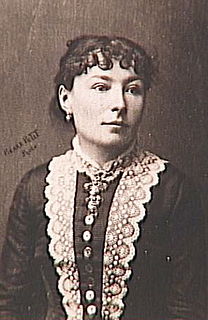
Virginie Élodie Marie Thérèse Demont-Breton was a French painter.
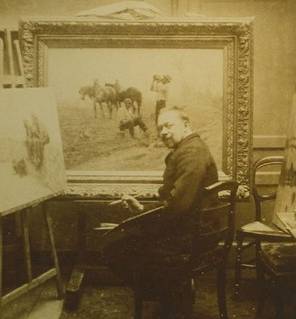
Georges Philibert Charles Maroniez was a French painter, specializing in landscapes with figures.

Louis Bernard Bonnier was a French architect known for his work as an urban planner for the city of Paris. He was instrumental in loosening the restrictions on the appearance of buildings in Paris, which resulted in the blossoming of Art Nouveau buildings. He designed many significant buildings himself, including private villas, public housing and railway buildings. In all his work he was true to the rationalist principles of Art Nouveau.
Cristina Baron, Georges Ricard-Cordingley, Paris, musée national de la Marine, 2006, ISBN 2-901421-25-3